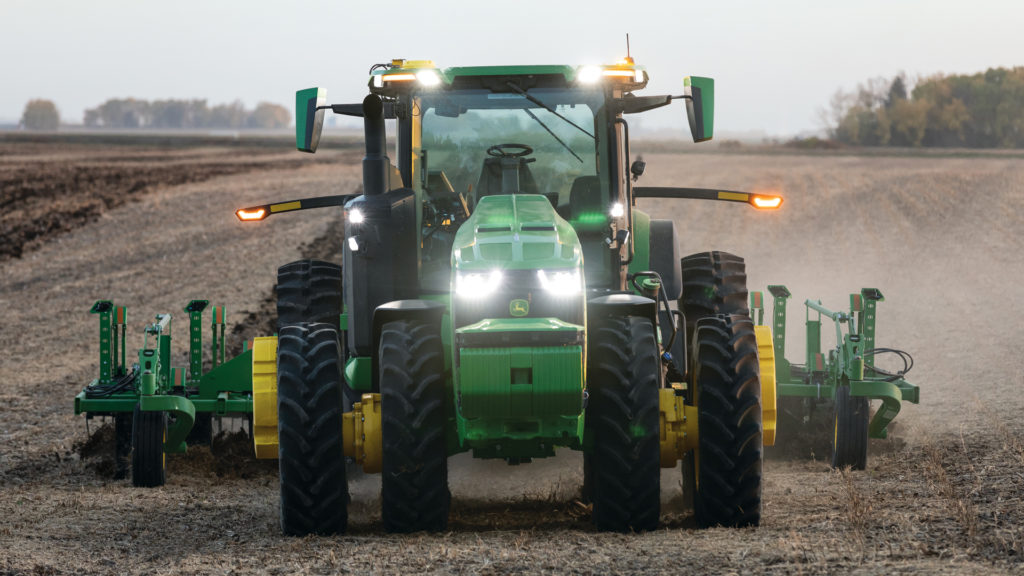There was a truck driver shortage before COVID-19, but the pandemic certainly compounded the problem. Trucking is just one link in the supply chain that has been greatly disrupted in the past couple of years, but it is a critical one required to move goods across the country.
Fruit and vegetable growers that need to transport their produce know the problem all too well. The American Trucking Associations has estimated the United States needs about 80,000 more drivers. That’s a tall order that many believe technology could help solve with autonomous trucks.

Photo courtesy of John Deere
What would have been seen as science fiction a decade ago is quickly becoming reality. In December, autonomous trucking startup TuSimple completed a truck run on the open road without a human in the vehicle. The 80-mile trip on surface roads and highways in Arizona between a rail yard in Tucson and a distribution center in Phoenix was completed successfully.
According to the company, this demonstration shows it has achieved Level 4 autonomous technology, which is a system able to drive itself completely without human intervention. TuSimple hopes to scale up its technology and be on the road in a commercial sense by 2024. Major trucking companies are lining up. As of mid-December, TuSimple reported orders reserved for the technology on 6,875 trucks.
Meanwhile, at the Consumer Electronics Show (CES) held in January in Las Vegas, driverless technology was the buzz, illustrating just how fast the automation revolution is approaching. An exhibition race held in conjunction with CES at the Las Vegas Motor Speedway pitted 21 driverless Indy cars against one another. The Italian-American team PoliMOVE took the checkered flag to win $150,000 in prize money.
Organizers deemed the race a success and say it demonstrated the computer algorithms that drove the cars can manage the high-speeds and trigger-fast maneuvers required. The top speed recorded during the race was 173 mph.
John Deere also made a big splash at the CES, where the company announced that its first fully autonomous tractor is ready for large-scale production. The new Deere 8R tractor will be available to farmers later this year.
The autonomous tractor has six pairs of stereo cameras, which enable 360-degree obstacle detection and the calculation of distance. Images captured by the cameras are passed through a deep neural network that classifies each pixel in approximately 100 milliseconds and determines if the machine continues to move or stops, depending on if an obstacle is detected. The autonomous tractor is also continuously checking its position relative to a geofence, ensuring it is operating where it is supposed to, and is accurate to within less than 1 inch.









